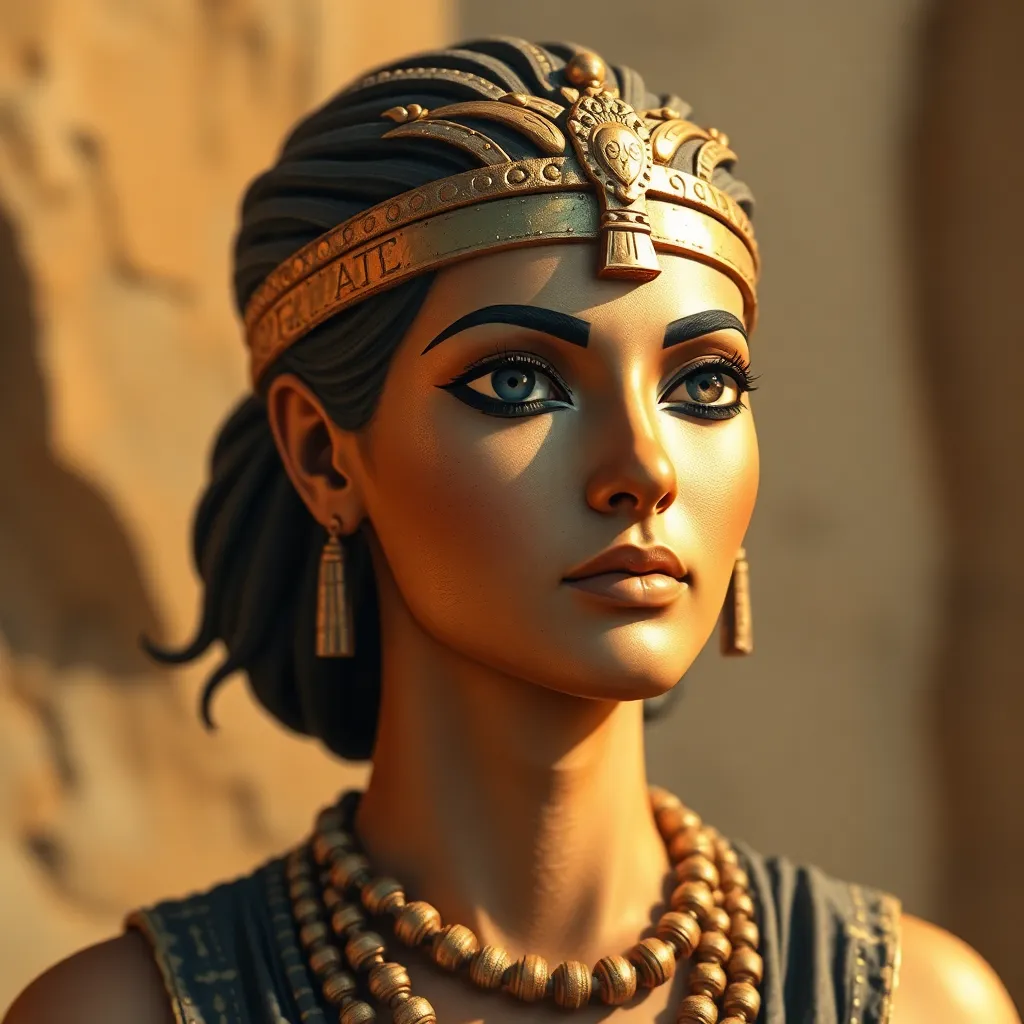The Role of Women in Atenism: A Shift in Gender Dynamics
I. Introduction
Atenism, a monotheistic belief system established during the reign of Pharaoh Akhenaten in the 14th century BCE, marked a significant departure from traditional Egyptian polytheism. This religious movement centered around the worship of Aten, the sun disk, and represented a radical shift in both spiritual and political paradigms of ancient Egypt.
Prior to the advent of Atenism, gender dynamics in ancient Egypt were characterized by a complex interplay of power, where women held certain rights and privileges, yet were largely confined to domestic roles. This article aims to explore the role of women in Atenism, examining how this religious transformation influenced their status and the broader implications for gender dynamics within ancient Egyptian society.
II. The Rise of Atenism: Historical Background
The reign of Akhenaten (circa 1353-1336 BCE) was marked by dramatic religious reforms, leading to the establishment of Atenism. Akhenaten, originally named Amenhotep IV, shifted the focus of worship from the traditional pantheon of gods to a singular devotion to Aten.
Key beliefs of Atenism included:
- The worship of Aten as the sole god, representing light and life.
- The rejection of other deities and traditional rituals.
- A strong emphasis on the pharaoh’s role as the intermediary between Aten and the people.
The socio-political context of this period was turbulent, with Akhenaten’s reforms leading to substantial upheaval in religious institutions and societal norms, setting the stage for changes in the perception of women’s roles.
III. Women in Traditional Ancient Egyptian Society
In pre-Atenism Egypt, gender roles were well defined, with men primarily occupying positions of power while women were expected to manage households and raise children. However, women could own property, initiate divorce, and hold economic power, which was relatively progressive for the time.
Women’s rights and status included:
- Legal rights to inherit property and wealth.
- Participation in religious ceremonies, albeit in limited capacities.
- Occasional roles as priestesses, particularly in the cult of Isis or Hathor.
Compared to later periods, women’s roles in religious practices before Atenism were largely supportive, with male priests dominating the spiritual landscape. The changes brought by Atenism would challenge these traditional dynamics.
IV. Women in Atenism: New Opportunities and Roles
The rise of Atenism created new avenues for women, notably through the influence of Queen Nefertiti. As Akhenaten’s chief wife, she played a pivotal role in the religious and political sphere, often depicted alongside her husband in significant religious rituals.
Changes in women’s social status during Akhenaten’s reign included:
- Increased visibility in public life and religious ceremonies.
- Representation in art as equals to men, a departure from previous artistic norms.
- Heightened influence in the royal court and family dynamics.
Atenist art and iconography often portrayed women as nurturing and powerful figures, symbolizing a shift in the societal perception of women’s roles.
V. Case Studies: Notable Women in Atenism
Several women emerged as pivotal figures during the Atenist movement:
A. Nefertiti: Symbol of Power and Influence
Nefertiti is perhaps the most famous queen of ancient Egypt, recognized for her beauty and significant role in promoting Atenism. She is often depicted in art with a high status, suggesting her influence in religious practices and governance.
B. Meritaten and Her Contributions to Atenism
Meritaten, the eldest daughter of Akhenaten and Nefertiti, was also significant in the Atenist framework. She was depicted in numerous reliefs, indicating her active participation in religious ceremonies and possibly in political affairs.
C. Lesser-Known Women and Their Roles in the Atenist Movement
Other women, though less well-known, also contributed to the Atenist movement. Many women may have served as priestesses or engaged in rituals that supported the new religious order, although their names remain largely unrecorded.
VI. The Impact of Atenism on Gender Dynamics
Atenism brought a notable shift in societal perceptions of women. During and after Akhenaten’s reign, women began to be seen more as contributors to religious and political spheres rather than solely as caretakers.
Long-term effects of Atenism on gender roles included:
- A gradual increase in women’s visibility in religious practices.
- Changes in inheritance laws and property rights, although these would fluctuate in subsequent dynasties.
- An enduring legacy of female figures in Egyptian mythology and history.
VII. Critiques and Limitations of Women’s Roles in Atenism
While the Atenist period heralded some changes in the roles of women, critiques suggest that many of these were superficial. The extent of change versus continuity in gender dynamics remains a topic of scholarly debate.
Limitations faced by women in the Atenist framework included:
- Continued societal expectations of women as primary caregivers.
- Limited access to political power outside of the royal family.
- Subsequent dynasties often reverted to more traditional gender roles.
VIII. Conclusion
The role of women in Atenism illustrates a complex interplay of change and continuity in ancient Egyptian gender dynamics. While women like Nefertiti and Meritaten gained prominence, the broader implications of these shifts were sometimes limited and context-dependent.
Understanding the dynamics of Atenism offers valuable insights into the societal structures of ancient cultures, highlighting the ways in which religion can influence gender roles. The legacy of Atenism continues to resonate in discussions about women’s history and their roles in ancient civilizations.




